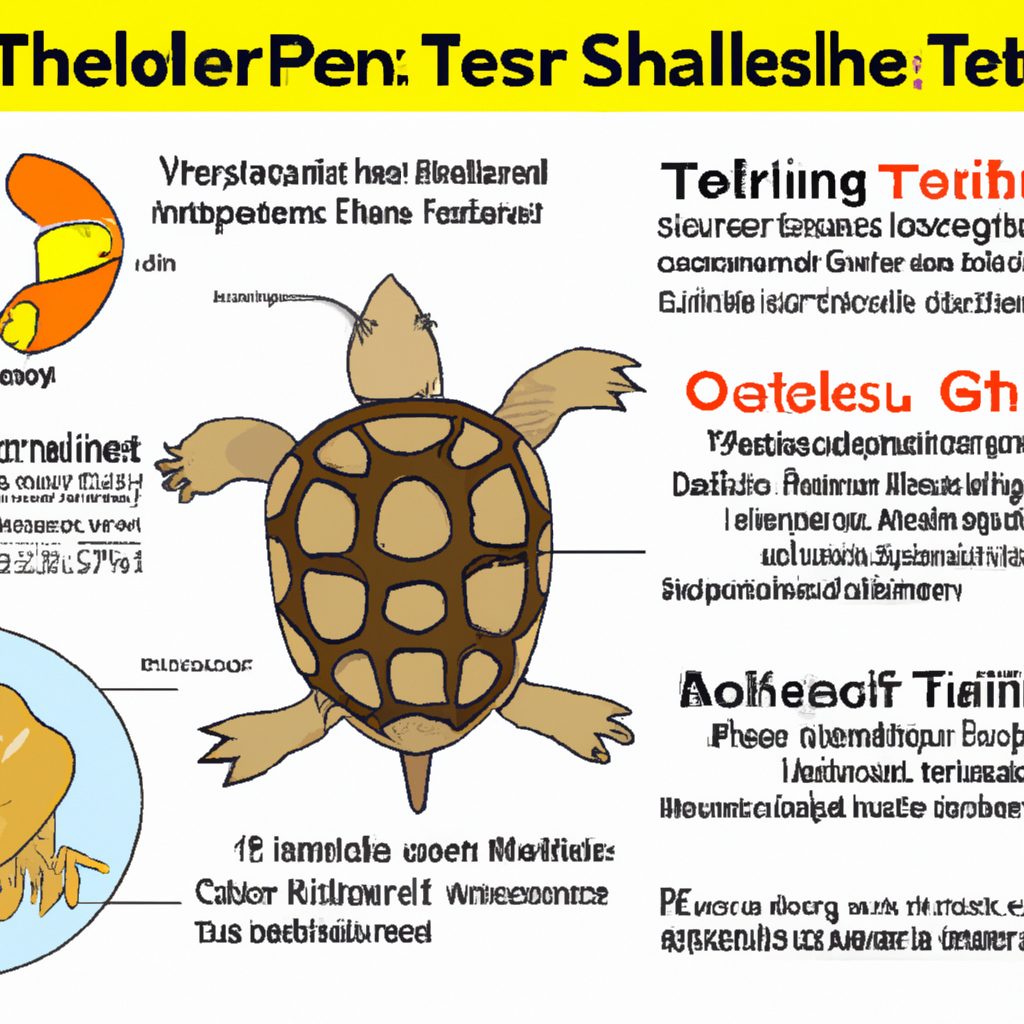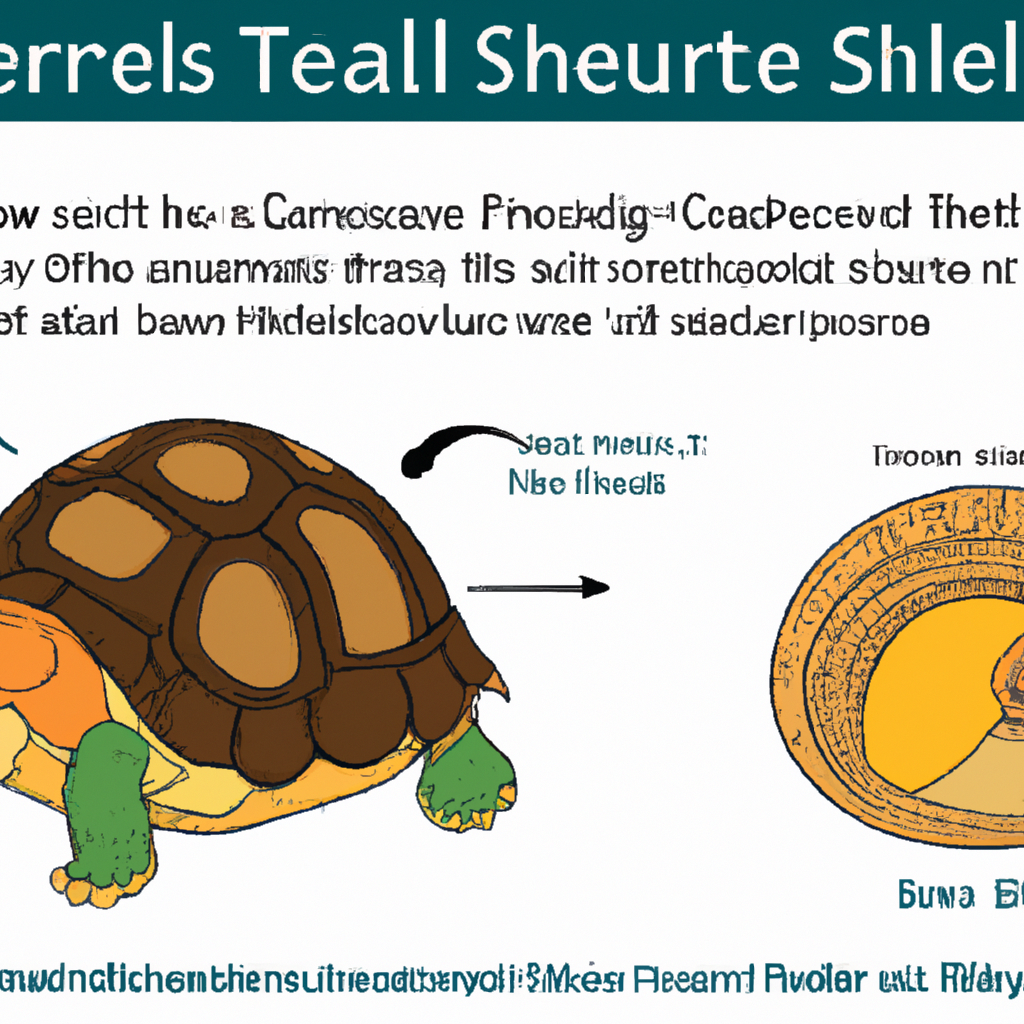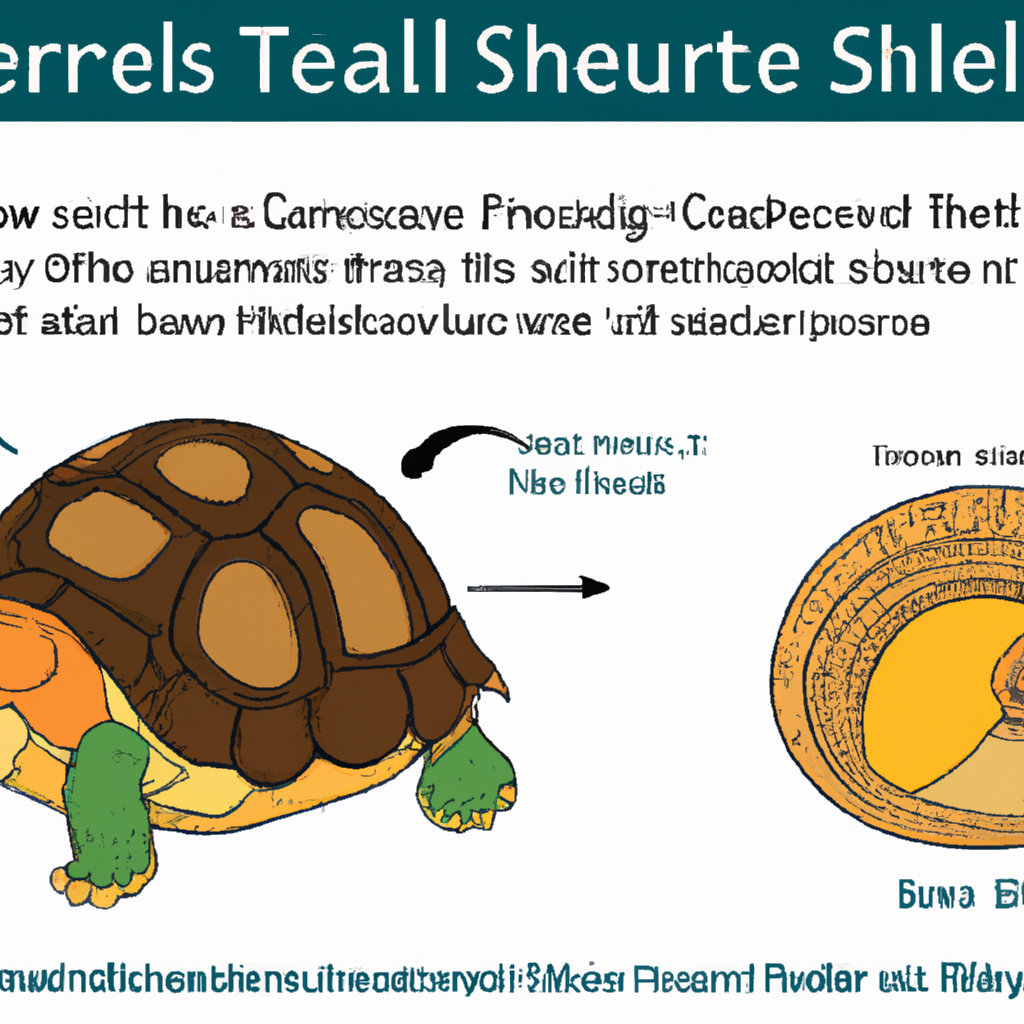So you’ve noticed some unusual-looking shells on turtles and you’re wondering what might be going on? In this article, we’ll give you a few tips on how to recognize and manage shell deformities in turtles. Whether you’re a turtle enthusiast or just have a newfound interest in these reptiles, understanding and being able to identify shell deformities is crucial for their well-being. By following these tips, you’ll become better equipped in caring for these adorable creatures and ensuring their shells remain healthy and strong.

Common Types of Shell Deformities
Soft Shell Deformities
Soft shell deformities are one of the most common types of shell abnormalities seen in turtles. This condition is characterized by a shell that feels soft and spongy instead of hard and solid. It is often a result of calcium or vitamin D deficiencies, which can hinder proper shell development. If left untreated, soft shell deformities can cause significant health issues for turtles, including metabolic bone disease and weakened immune systems.
Pyramiding
Pyramiding is an abnormal growth pattern where the scutes on a turtle’s shell start to bulge upward, resembling pyramids. This condition is commonly seen in aquatic turtles and is usually the result of poor nutrition and improper housing conditions. High-protein diets and low humidity levels contribute to the development of pyramiding. It can impact the turtle’s ability to swim and can lead to shell fractures or infections if not addressed.
Indented Scutes
Indented scutes are another type of shell deformity where the individual scutes on a turtle’s shell appear recessed or sunken in. This condition can be caused by various factors, including injury, improper handling, or inadequate nutrition. Indented scutes can weaken the shell structure and make turtles more susceptible to injuries and infections.
Cracked or Damaged Shell
Cracked or damaged shells can occur due to trauma, such as falls or attacks from predators. These deformities can range from small cracks to severe fractures, and they can expose the underlying bone and tissue. Cracked or damaged shells require immediate veterinary attention to prevent infection and promote proper healing.
Causes of Shell Deformities
Inadequate Diet
An inadequate diet lacking essential nutrients like calcium and vitamin D is one of the leading causes of shell deformities in turtles. Turtles need a well-balanced diet that includes a variety of leafy greens, vegetables, and occasionally protein sources like insects or commercial turtle pellets. Calcium and vitamin D3 supplementation may be necessary, especially for captive turtles.
Incorrect Lighting and Temperature
Proper lighting and temperature are crucial for a turtle’s overall health and shell development. Insufficient exposure to ultraviolet-B (UVB) radiation can hinder the production of vitamin D3, which is necessary for proper calcium absorption. Inadequate heating and cooling in the turtle’s enclosure can also disrupt metabolic processes, impacting shell growth and overall well-being.
Improper Handling or Housing
Turtles require appropriate handling and housing to prevent shell deformities. Rough handling, dropping, or mishandling turtles can result in shell injuries and deformities. Additionally, inadequate enclosure size, lack of hiding spots, or unsuitable substrate can lead to restricted shell growth and deformities.
Genetic Factors
Genetic factors can also contribute to shell deformities in turtles. Some turtles may have inherent genetic predispositions that make them more prone to developing abnormal shell growth patterns. Responsible breeding practices can help minimize the risk of genetic deformities in turtles.
Recognizing Shell Deformities
Physical Examination
A visual examination of a turtle’s shell is the first step in recognizing shell deformities. Look for signs of softness, pyramiding, indented scutes, cracks, or other damage. Run your hands gently over the shell to feel for abnormalities, such as soft or misshapen areas.
Behavioral Changes
Changes in a turtle’s behavior can also indicate shell deformities. If you notice a decrease in activity, reluctance to swim, or changes in appetite, there may be an underlying shell issue. Turtles with deformities may experience discomfort or pain, leading to behavioral changes.
Shell Texture and Color
Pay attention to the texture and color of a turtle’s shell. A healthy shell should have a firm texture and a consistent color. Any soft spots, discoloration, or abnormal growth patterns should be noted as potential signs of shell deformities.
Creating an Optimal Environment
Dietary Adjustments
To promote shell health and growth, ensure your turtle is receiving a balanced diet. Consult a reptile veterinarian or a herpetologist to determine the appropriate diet for your specific turtle species. Include calcium-rich foods and consider calcium and vitamin D3 supplements as recommended by your vet.
Proper Lighting and Temperature
Install UVB lights in your turtle’s enclosure to provide the necessary UVB radiation for vitamin D3 synthesis. Use thermometers and heaters to maintain the appropriate temperature gradient for your turtle’s species. Adequate lighting and temperature regulation are crucial for a turtle’s overall health and shell development.
Spacious Enclosure
Provide your turtle with a spacious enclosure that allows for natural movement and exploration. A cramped or poorly sized enclosure can limit exercise and impede proper shell development. Consider the adult size of your turtle and provide a habitat that accommodates its needs.
Appropriate Substrate
Choose an appropriate substrate for your turtle’s enclosure. Soft substrates like sand or gravel can cause injuries and deformities, especially in turtles that frequently burrow or dig. Opt for smooth, non-abrasive materials such as reptile carpet or large river rocks.
Regular Veterinary Check-ups
Schedule regular check-ups with a reptile veterinarian to monitor your turtle’s health and shell development. A veterinarian can provide guidance on diet, enclosure setup, and identify potential issues before they become severe. Early detection and intervention can greatly improve the outcome for turtles with shell deformities.

Managing Shell Deformities
Nutritional Supplements
Supplementing your turtle’s diet with calcium and vitamin D3 can help improve shell health and prevent further deformities. Follow your veterinarian’s recommendations for dosage and administration.
Shell Repair Techniques
In cases of minor shell damage or cracks, various shell repair techniques can be employed. These include using epoxy or specialized shell repair products to seal and stabilize the damaged area. Consult a reptile veterinarian for proper guidance on shell repair techniques.
Physical Therapy
Physical therapy can be beneficial for turtles with shell deformities. Controlled exercises, such as swimming or gentle shell manipulation, can help strengthen weakened muscles and improve mobility. Work closely with a veterinarian or an experienced reptile rehabber to develop a suitable physical therapy program for your turtle.
Environmental Enrichment
Environmental enrichment can enhance a turtle’s mental and physical well-being. Provide hiding spots, basking areas, and opportunities for exploration to keep your turtle active and engaged. Engaging in natural behaviors can help turtles build strength and resilience, aiding in their overall recovery.
Preventing Shell Deformities
Proper Nutrition
Maintaining a balanced and nutritious diet is key to preventing shell deformities. Ensure your turtle’s diet includes a variety of calcium-rich foods, leafy greens, and other recommended food sources. Avoid an overreliance on protein-based foods, as it can disrupt the calcium-to-phosphorus ratio.
Correct Lighting and Temperature
Install appropriate UVB lights and maintain proper temperature gradients in your turtle’s enclosure. Regular exposure to UVB radiation stimulates vitamin D3 production, which aids in calcium absorption. Consistent temperature regulation promotes metabolic processes necessary for shell health.
Safe Handling and Housing
Handle your turtle with care to prevent injuries or shell deformities. Avoid dropping or mishandling turtles, and always provide a safe and suitable enclosure with proper flooring and hiding spots.
Breeding Practices
Responsible breeding practices can contribute to preventing genetic shell deformities. Avoid breeding turtles with known shell abnormalities or deformities to minimize the risk of passing on genetic issues to future generations.
Consulting a Veterinarian
Finding a Reptile Veterinarian
When seeking veterinary care for your turtle, it’s crucial to find a veterinarian experienced in reptile medicine. Look for a reptile specialist or a vet who has a particular interest in turtles. They will have the knowledge and expertise to provide appropriate diagnosis and treatment for shell deformities.
Diagnostic Procedures
Reptile veterinarians may utilize various diagnostic procedures to assess shell deformities. These may include physical examinations, X-rays, blood tests, and microbial cultures. These tests help to determine the underlying cause of the deformity and guide treatment options.
Treatment Options
Treatment options for shell deformities will depend on the specific condition and its severity. Conservatively managed deformities may require dietary adjustments, environmental modifications, and supportive care. In more severe cases, surgical intervention or specialized treatments may be necessary. Work closely with your reptile veterinarian to create a personalized treatment plan for your turtle.
Supporting the Healing Process
Patient Monitoring
Regular monitoring of your turtle’s progress is essential for evaluating the effectiveness of treatments and interventions. Keep an eye on any changes in behavior, appetite, or the physical appearance of the shell. Take note of improvements or setbacks and communicate them to your veterinarian.
Rehabilitation Tips
If your turtle requires physical therapy or rehabilitation, it’s crucial to follow the protocols provided by your veterinarian or rehabber. Be patient and consistent with the prescribed exercises and environmental enrichment activities. Gradual and monitored progression will help ensure the best possible outcome.
Follow-up Care
After initial treatment, follow-up care is necessary to monitor the long-term effects of the interventions. Schedule regular veterinary visits to assess your turtle’s progress and adjust treatment plans as needed. Your vet will determine the frequency of follow-up visits based on your turtle’s individual needs.
Educating Turtle Owners
Educational Resources
Educating turtle owners about shell deformities is crucial for prevention and early intervention. Provide educational resources, such as articles, books, or workshops, to inform owners about proper diet, husbandry, and breeding practices. Organizations, online forums, and local reptile clubs can also serve as valuable sources of information.
Importance of Responsible Ownership
Highlight the importance of responsible ownership when discussing shell deformities. Emphasize the need for proper nutrition, appropriate enclosures, and regular veterinary care. Responsible ownership contributes to the overall welfare and well-being of turtles and supports conservation efforts.
Promoting Species Conservation
Use discussions about shell deformities as an opportunity to promote species conservation. Educate turtle owners about the risks faced by turtles in the wild and the importance of preserving their habitats. Encourage participation in conservation efforts and responsible acquisition of turtles from reputable sources.
Conclusion
Recognizing and managing shell deformities in turtles is essential for their overall health and well-being. By understanding the common types of deformities, their causes, and how to create an optimal environment, turtle owners can effectively prevent and address shell deformities. Prompt veterinary care, proper nutrition, and supportive treatments play a crucial role in managing and supporting the healing process. Informed and responsible ownership is key to ensuring the long-term health and conservation of these unique and fascinating reptiles.
